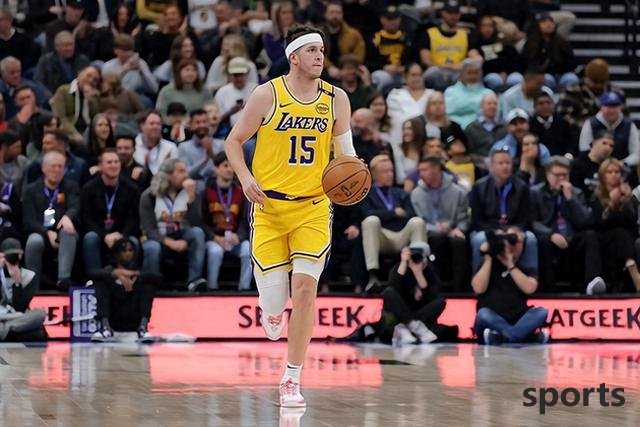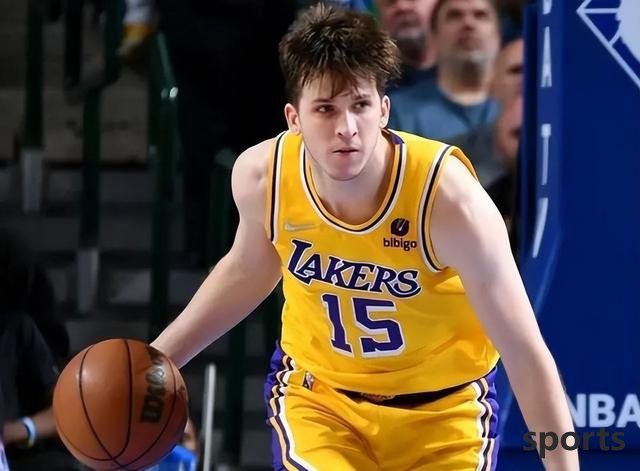Rivers 30 million contract detonates the league: a counterattack path from undraft to a maximum-salary defender
When Lakers media Lakers Daily revealed that Austin Rivers' next contract is expected to earn $30 million, the entire NBA circle was shocked. This undraft, which was struggling in the Development League three years ago, has now become an indispensable core in the Lakers' backcourt. This season's all-around performance of 20.2 points and 5.8 assists per game in the regular season, coupled with the highlights of turning the tides many times in the critical playoffs, has made his market value soar to the All-Star level. But behind this contract is a huge challenge to the Lakers' salary structure, and it is also the league's redefinition of the value of modern basketball guards. 1. Data explosion: The transformation from marginal people to all-stars. The rise of Rivers is an inspirational model in the NBA. When he joined the Lakers as a undraft in 2021, his annual salary was only $75,000. But through three seasons of transformation, he has grown into one of the league's most comprehensive dual-sports guards: 36.7% from three points this season, averaging 2.6 three-pointers, while leading the Lakers' assists list with 5.8 assists. More importantly, his true plus-negative value (+5.2) ranks 12th among the league guards, and his contribution on both offense and defense is far beyond salary levels. This progress stems from his targeted strengthening of his own shortcomings. During the offseason, he hired former NBA player Jamal Crawford for ball-handling training and developed two killer moves: "rhythm change breakthrough" and "emergency stop throwing". In the Western Conference semi-finals against the Nuggets, he faced Murray's defense, averaged 22 points per game with this move, and shot up to 41.7% from three-pointers, completely reversing the outside world's prejudice against him in the playoffs. 2. Market game: The same underlying logic, Rivers' contract valuation is not groundless. Compared with players of the same type, Poole (averages 18.5 points and 4 assists) signed 109 million in 4 years, while Heelo (averages 20.7 points and 4 assists) scored 130 million in 4 years, while Rivers' data and tactical value are better than two people. More importantly, his commercial value is exploding: the number of social media fans has exceeded 5 million, becoming a key partner for international brands such as Nike and Gatorade. Judging from the league trend, the demand for the core of ball holding is soaring. Rivers ranked 8th in the league in pick-and-roll round scoring rate (1.12 points/round) this season, and his three-point shooting percentage (42.3%) at the critical moment is topped by the defender. This kind of "capable of attacking and good transmission" is the scariest resource for the championship team. The Rockets, Timberwolves and other teams have clearly expressed their interest, and the Rockets are even willing to trade Shen Jing + first-round picks for him to make room for chasing Antetokounmpo in the future. 3. The Lakers' Dilemma: The salary cycle and the championship window period The Lakers' contract renewal dilemma can be regarded as a microcosm of the NBA's salary structure. The salary cap for 2026 is expected to be $154.6 million, but the salary of James (52 million), Doncic (46 million), and Davis (42 million) has accounted for 83% of the total space. If Rivers renews its contract with 30 million, the Lakers will trigger a second-tier luxury tax (over 195.9 million in hard salary cap), with an additional $120 million in taxes each year. This pressure forces management to make a choice between "immediate combat power reserve" and "future flexibility". What's more serious is that Rivers' defensive shortcomings may become a hidden danger to the championship. In the playoffs, his defensive efficiency (118.7) ranked fifth from the bottom of all starting guards, with an opponent's pick-and-roll tactic success rate against him at a 48%. If the Lakers insist on building a team around him and Doncic, they must match at least two top 3D players, which will further reduce the salary space. 4. Future deduction: Three possible scripts 1. Maximum salary renewal and create a new dual-core If the Lakers make every effort, they may provide a 4-year, 120 million contract in 2026. The premise of this plan is that James retires and Davis accepts salary cuts, and at the same time, the premium contracts such as Vanderbilt (11.57 million) and Vincent (11.5 million) are cleared through transactions. In this case, Rivers will form the league's most offensive backcourt with Doncic, but the defensive loopholes may make the Lakers unable to make it in the playoffs. 2. Sign first and then exchange in exchange for rebuilding chips The Lakers' more likely option is to sign Rivers first and then exchange in 2026. Referring to Herro's trading value, Rivers can get at least 1 All-Star inside player (such as the Pacers' Turner) + 2 first-round picks. This operation not only avoids luxury taxes, but also adds an inside barrier to Doncic. But the risk is that if Rivers continues to explode in the new team, the Lakers will miss the core puzzle for the next decade. 3. The short-term transition, waiting for the market to cool down, the safest solution is to provide a 4-year "transfer contract" of 89.2 million yuan and set incentive clauses (such as being selected as an All-Star Trigger Bonus). This strategy can both retain Rivers and make room for operation after the salary cap rises in 2028. But the Rivers team is obviously more inclined to pursue maximum salary, and the game between the two sides will continue until the opening of the free market in 2026. 

- Recent Posts
-
- On the stage of the Western Co
- 25-year-old Halliburton sent 2
- G6 lost 17 points! The Thunder
- G4 Thunder 128-126 Timberwolve
- Media person: Xiao Zeng has so
- It was not until I saw the Cel
- Want to achieve an immortal ba
- US media divides the viewing r
- The Lakers have another chance
- Rockets officially announced 5
- Hot Posts
-
- After signing with the Trail B
- "NBA Finals G6" Thunder VS Pac
- Bill wants to complete a buyou
- Thunder substitute Caruso: Gre
- 2-1 in one game! WTA Berlin St
- First-time pick, 25th first-ro
- After the NBA Clippers trade,
- The latest news of the Warrior
- Rockets officially announced 5
- The Suns are finally going to
- Outrageous! The truth about th
- If 13 million is received, run
- US media questioned Yang Hanse
- Paul George undergoes surgery
- Is Paul expected to join the L
- On May 2, Pelinka s latest int
- 8 first rounds + 60 million sp
- Anthony: I ve been through man
- Cavaliers President: Mobley s
- The Warriors "beat" Gobert by
- search
-
- Links
-
